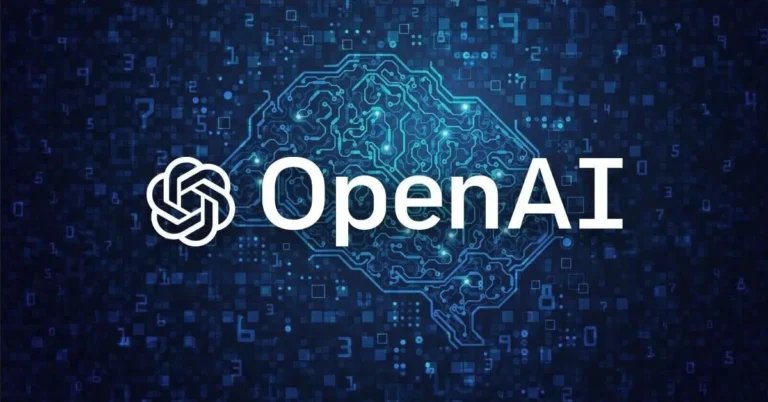Introduction
Artificial Intelligence (AI) has been a transformative force across various industries, from healthcare to finance, and its impact continues to grow. At the forefront of this revolution is Open AI, an organization dedicated to developing and promoting friendly AI for the benefit of humanity. This article delves into what Open AI is, its key initiatives, the technology behind it, and its implications for the future.
What is Open AI?
Open AI is a research organization focused on developing advanced artificial intelligence technologies with a mission to ensure that AI benefits all of humanity. Founded in December 2015 by Elon Musk, Sam Altman, Greg Brockman, Ilya Sutskever, Wojciech Zaremba, and John Schulman, Open AI was established to advance digital intelligence in a way that is safe and aligned with human values.
The organization operates with a commitment to transparency and collaboration, aiming to contribute to the global AI community by sharing research findings, tools, and technologies. Open AI’s approach emphasizes creating AI systems that are robust, fair, and secure, minimizing the risk of misuse or unintended consequences.
Key Initiatives and Achievements
1. GPT-3 and Language Models
One of Open AI’s most significant achievements is the development of GPT-3 (Generative Pre-trained Transformer 3), a state-of-the-art language model. GPT-3 is designed to understand and generate human-like text based on the input it receives. It has 175 billion parameters, making it one of the largest and most powerful language models ever created.
GPT-3 has demonstrated remarkable capabilities in various natural language processing tasks, including text generation, translation, summarization, and question-answering. Its versatility has led to numerous applications, from chatbots and content creation to coding assistance and educational tools.
2. AI Ethics and Safety
Open AI is deeply committed to addressing the ethical implications of AI technology. The organization researches AI safety, focusing on ensuring that AI systems behave as intended and do not cause harm. Open AI’s work in this area includes developing techniques to make AI models more interpretable, controllable, and robust against adversarial attacks.
In addition, Open AI emphasizes the importance of responsible AI deployment. The organization advocates for the establishment of guidelines and policies to govern the use of AI, ensuring that it is used ethically and for the greater good.
3. Open AI’s API and Commercial Ventures
Open AI offers an API (Application Programming Interface) that allows developers to integrate its language models into various applications. The API provides access to GPT-3 and other models, enabling businesses to leverage advanced AI capabilities for tasks such as content generation, customer support, and data analysis.
The commercialization of Open AI technology has been a significant step in bridging the gap between cutting-edge research and practical applications. By offering its models through the API, Open AI has made advanced AI accessible to a broader audience, fostering innovation across industries.
The Technology Behind Open AI
1. Deep Learning and Neural Networks
At the core of Open AI’s technology is deep learning, a subset of machine learning that involves training artificial neural networks with large datasets. Neural networks are composed of interconnected nodes (neurons) that process information and learn patterns from data.
Deep learning models, such as GPT-3, use multiple layers of these networks to extract increasingly complex features from the input data. This hierarchical learning process enables the models to perform tasks that require understanding context, nuances, and relationships within the data.
2. Transformers and Attention Mechanisms
GPT-3 and other language models developed by Open AI are based on transformer architecture. Transformers are a type of neural network designed to handle sequential data, such as text, more effectively than traditional recurrent neural networks (RNNs).
A key feature of transformers is the attention mechanism, which allows the model to focus on different parts of the input data when generating output. This mechanism enables the model to capture long-range dependencies and context, resulting in more coherent and contextually relevant text generation.
3. Pre-training and Fine-tuning
Open AI’s language models undergo a two-step training process: pre-training and fine-tuning. During pre-training, the model is exposed to a large corpus of text data and learns to predict the next word in a sequence. This process helps the model develop a broad understanding of language and knowledge.
Fine-tuning involves training the model on a smaller, task-specific dataset to adapt its capabilities to particular applications. This step allows the model to perform well on specialized tasks, such as answering questions or generating creative content.
Implications for the Future
1. Transforming Industries
The advancements driven by Open AI have the potential to transform various industries. In healthcare, AI-powered tools can assist in diagnosing diseases, analyzing medical records, and personalizing treatment plans. In finance, AI can improve fraud detection, risk management, and customer service.
The impact of AI extends to creative fields as well. GPT-3 and similar models are being used to generate art, write stories, and compose music, opening new possibilities for creative expression and collaboration.
2. Ethical and Social Considerations
As AI technology continues to evolve, it raises important ethical and social considerations. Open AI’s focus on safety and ethics is crucial in addressing concerns related to privacy, bias, and accountability. Ensuring that AI systems are developed and deployed responsibly is essential for maintaining public trust and maximizing the benefits of the technology.
Moreover, the widespread adoption of AI has implications for the future of work. While AI can automate certain tasks and improve efficiency, it also raises questions about job displacement and the need for reskilling. Addressing these challenges will be key to ensuring a smooth transition to an AI-driven future.
3. Advancing AI Research
Open AI’s commitment to research and collaboration is driving progress in the field of AI. By sharing its findings and engaging with the broader research community, Open AI contributes to the collective knowledge and development of AI technologies. This collaborative approach fosters innovation and helps address complex challenges in AI research.
Conclusion
Open AI is at the forefront of the AI revolution, driving advancements in language models, ethical considerations, and practical applications. Through its research, technology, and commitment to responsible AI, Open AI is shaping the future of artificial intelligence and its impact on society.
As we look ahead, the continued evolution of AI will undoubtedly bring new opportunities and challenges. Open AI’s efforts to develop safe, transparent, and beneficial AI systems will play a crucial role in ensuring that this transformative technology serves humanity’s best interests.
Read More: Niles Garden Circus: A Magical Experience Awaiting You





